Charles E W Bean, Diaries, AWM38 3DRL 606/256/1 - 1915 - 1936 - Part 17
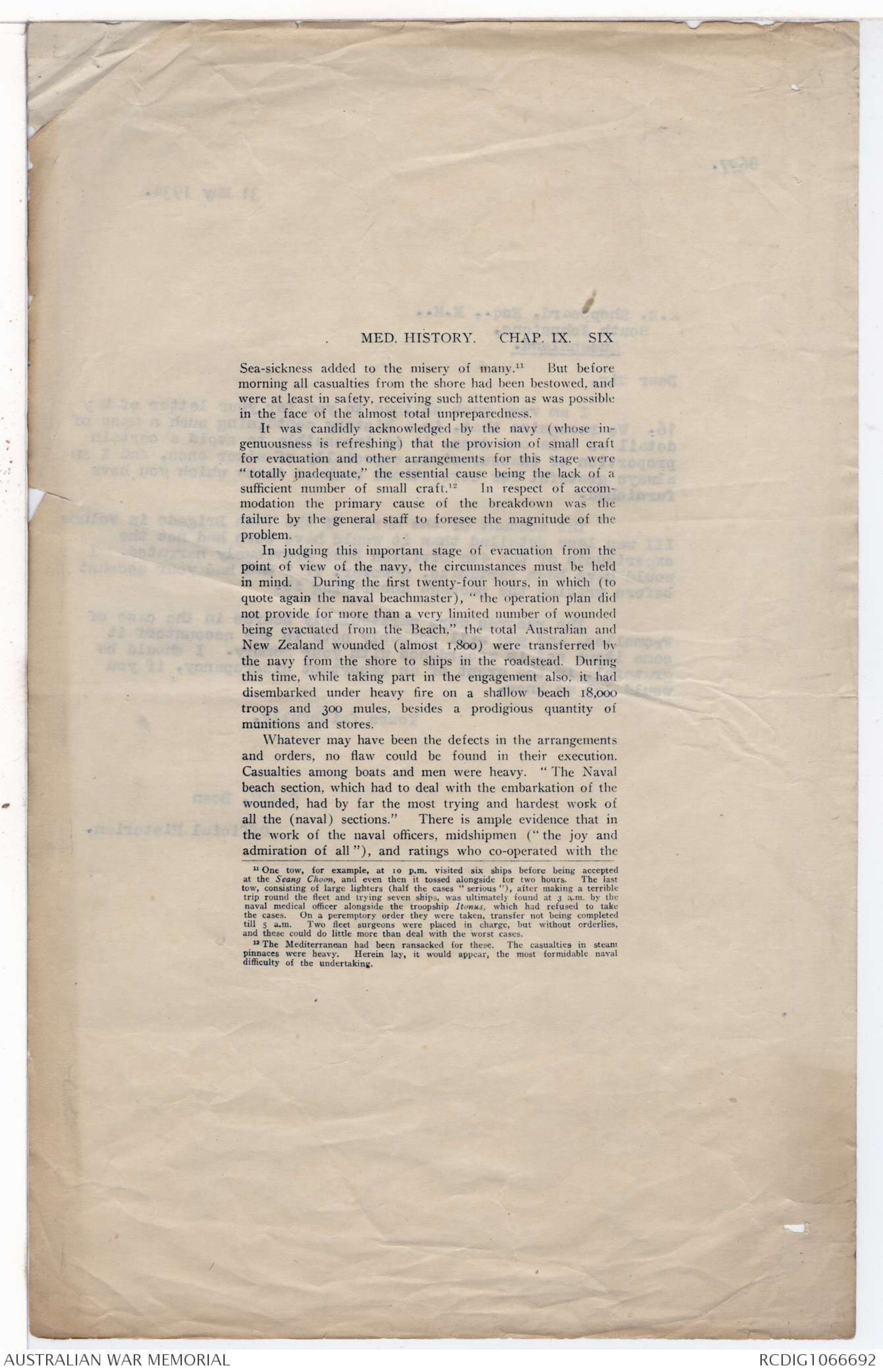
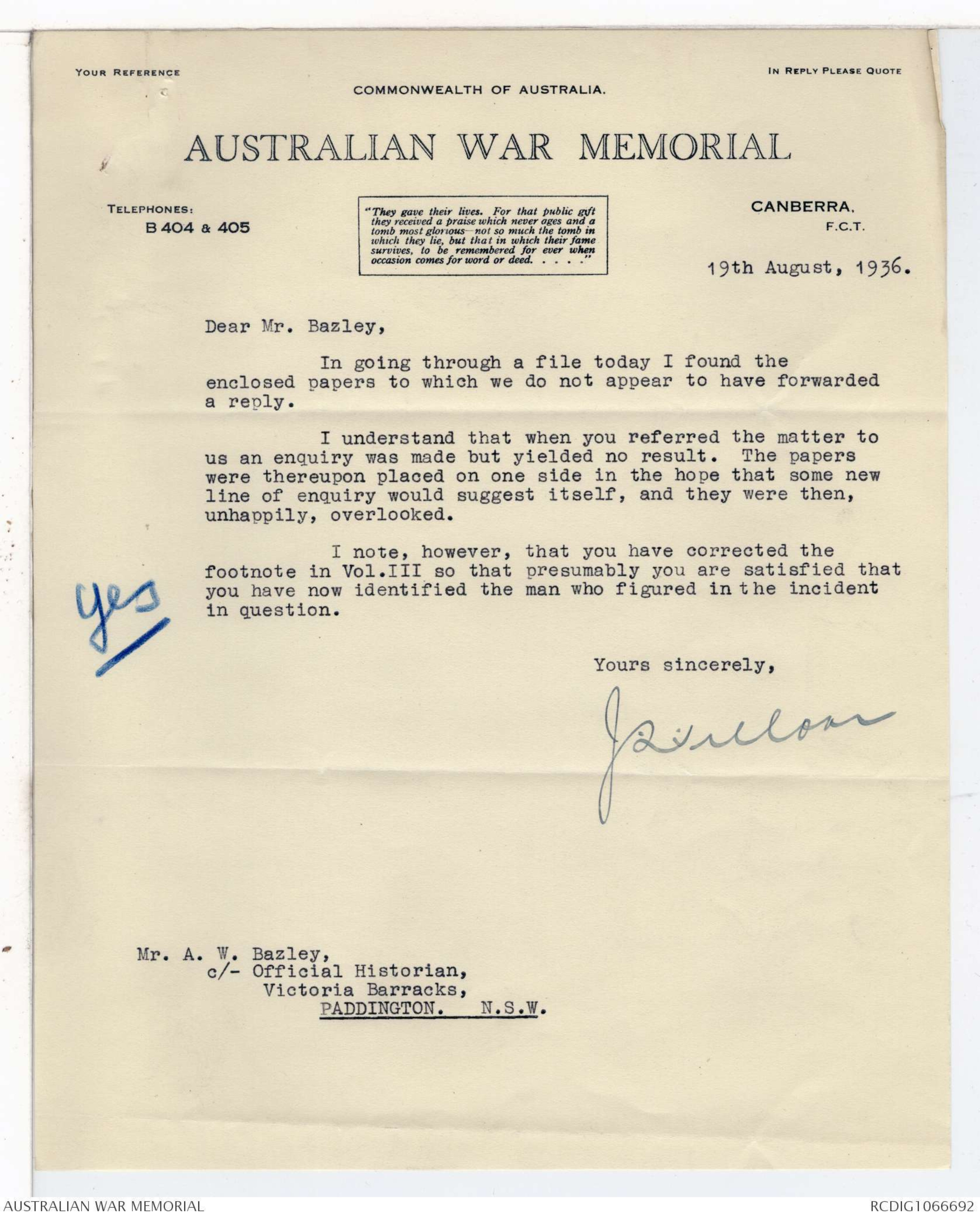


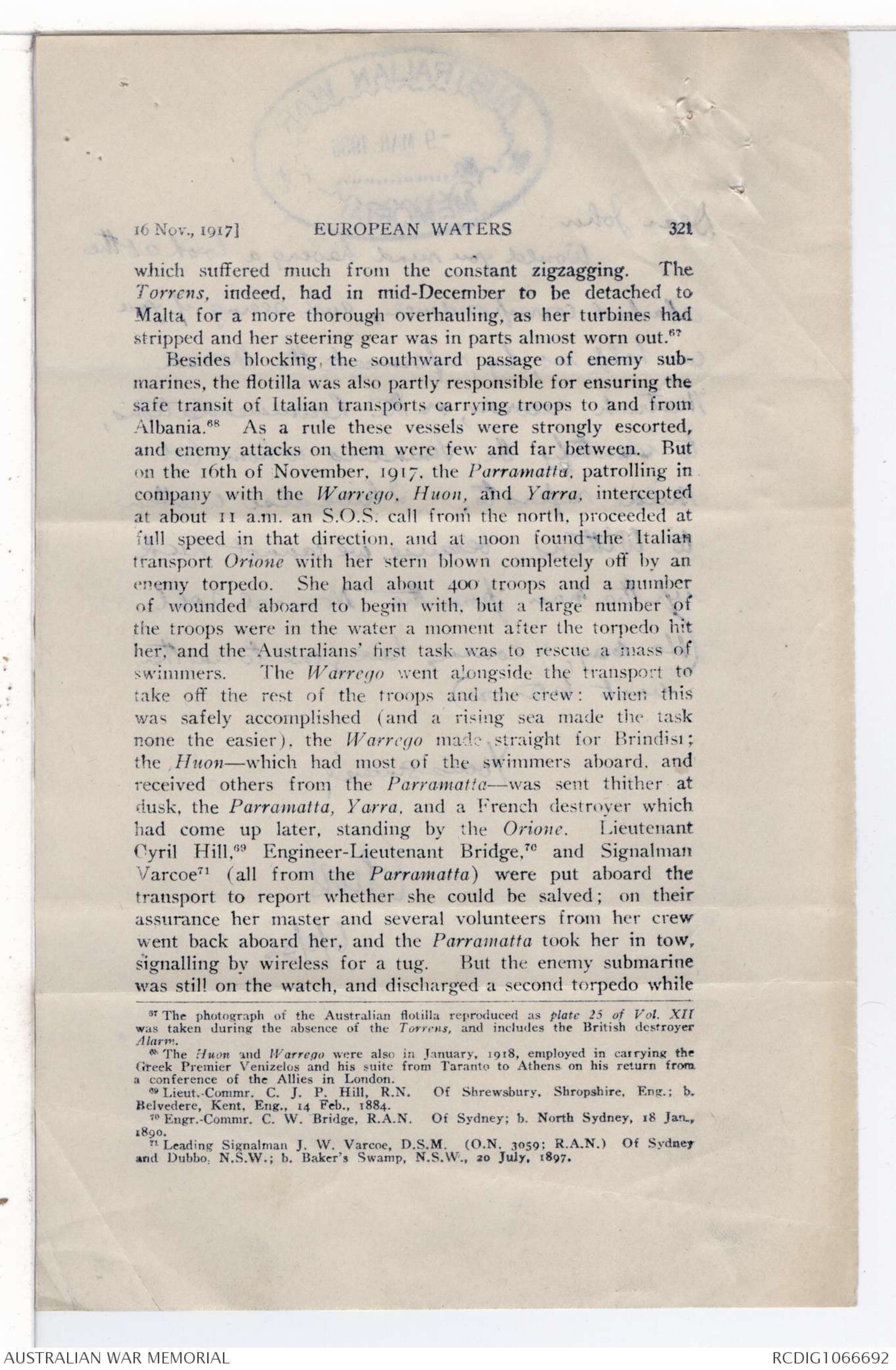
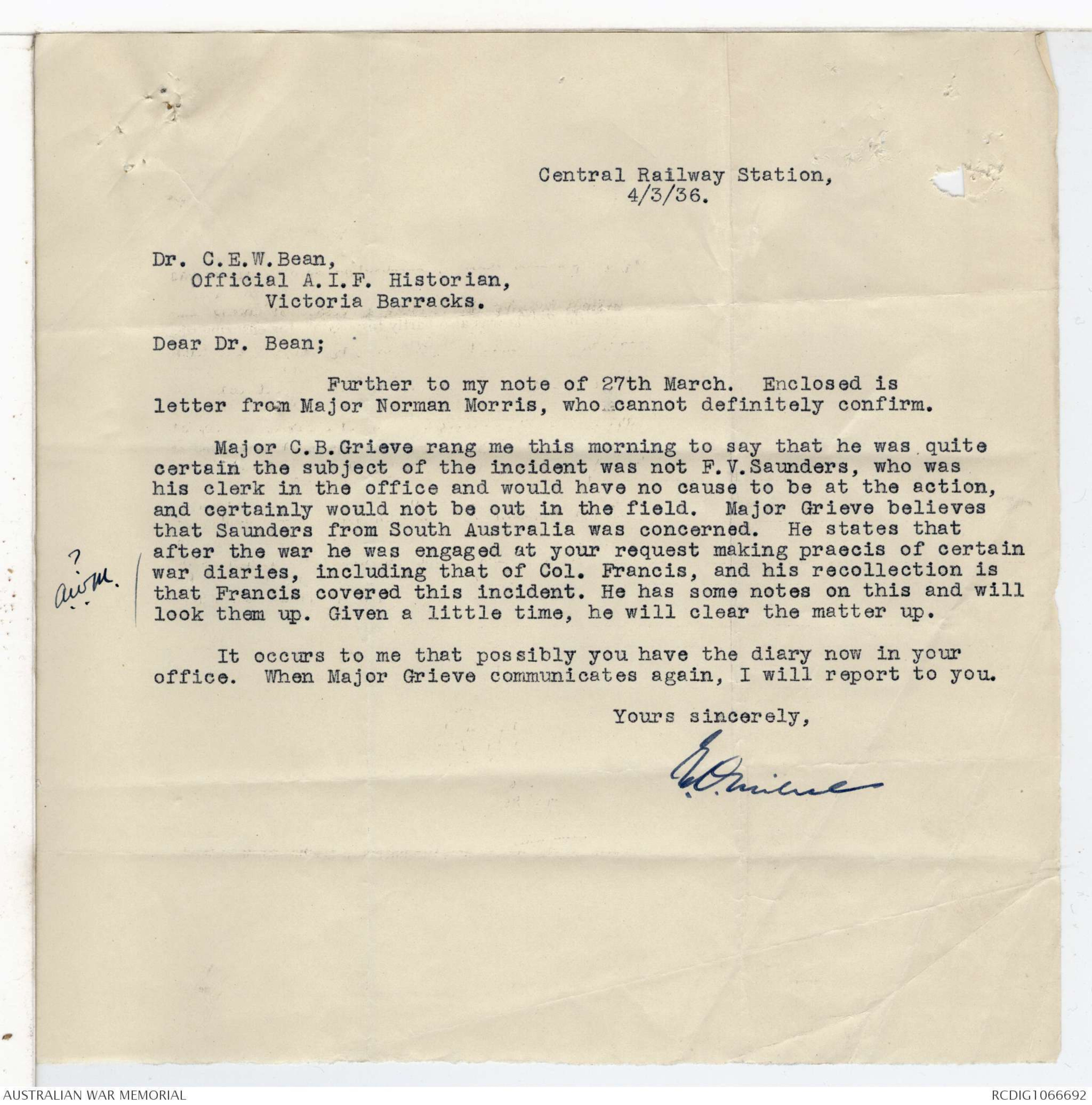
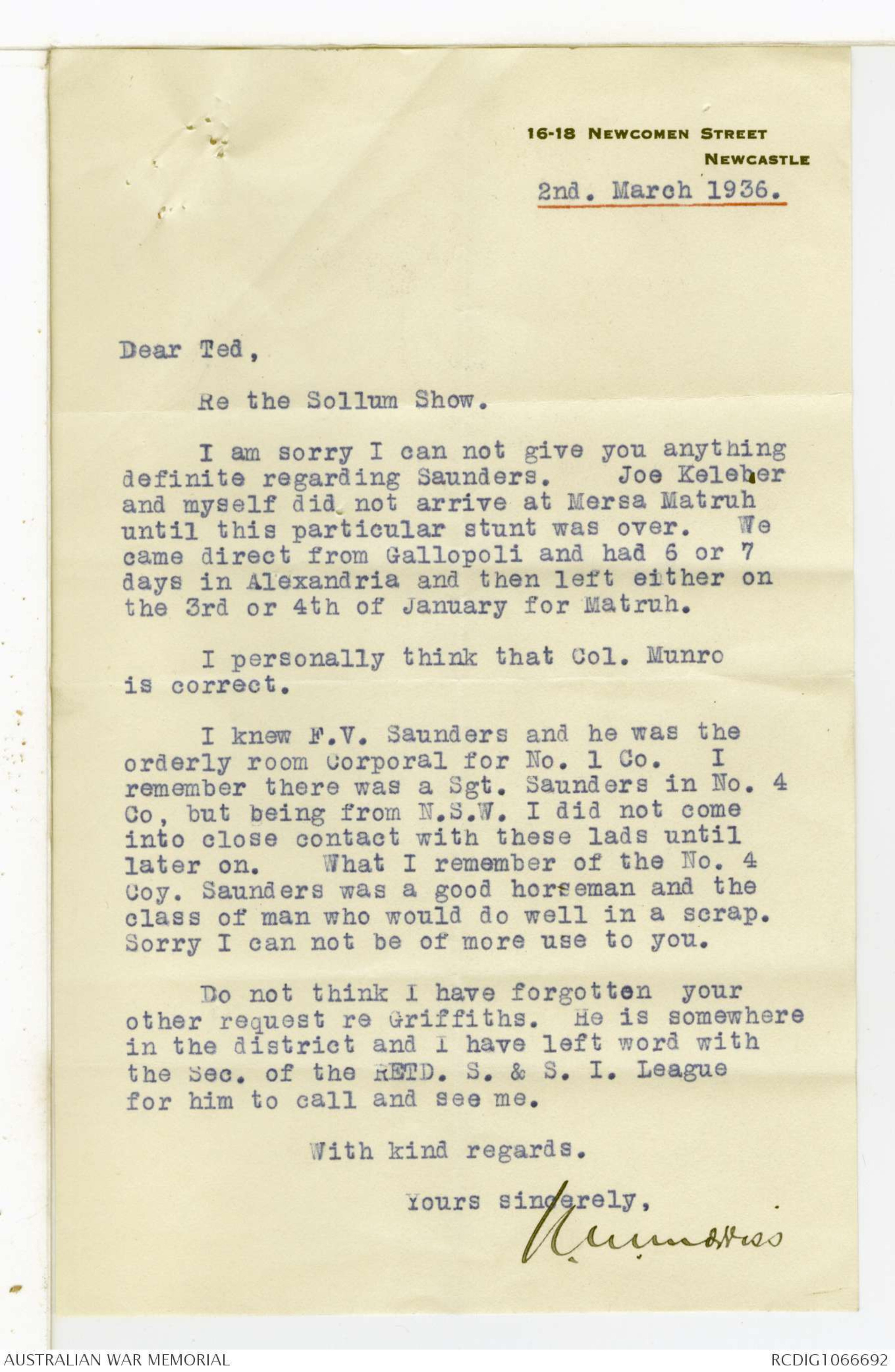
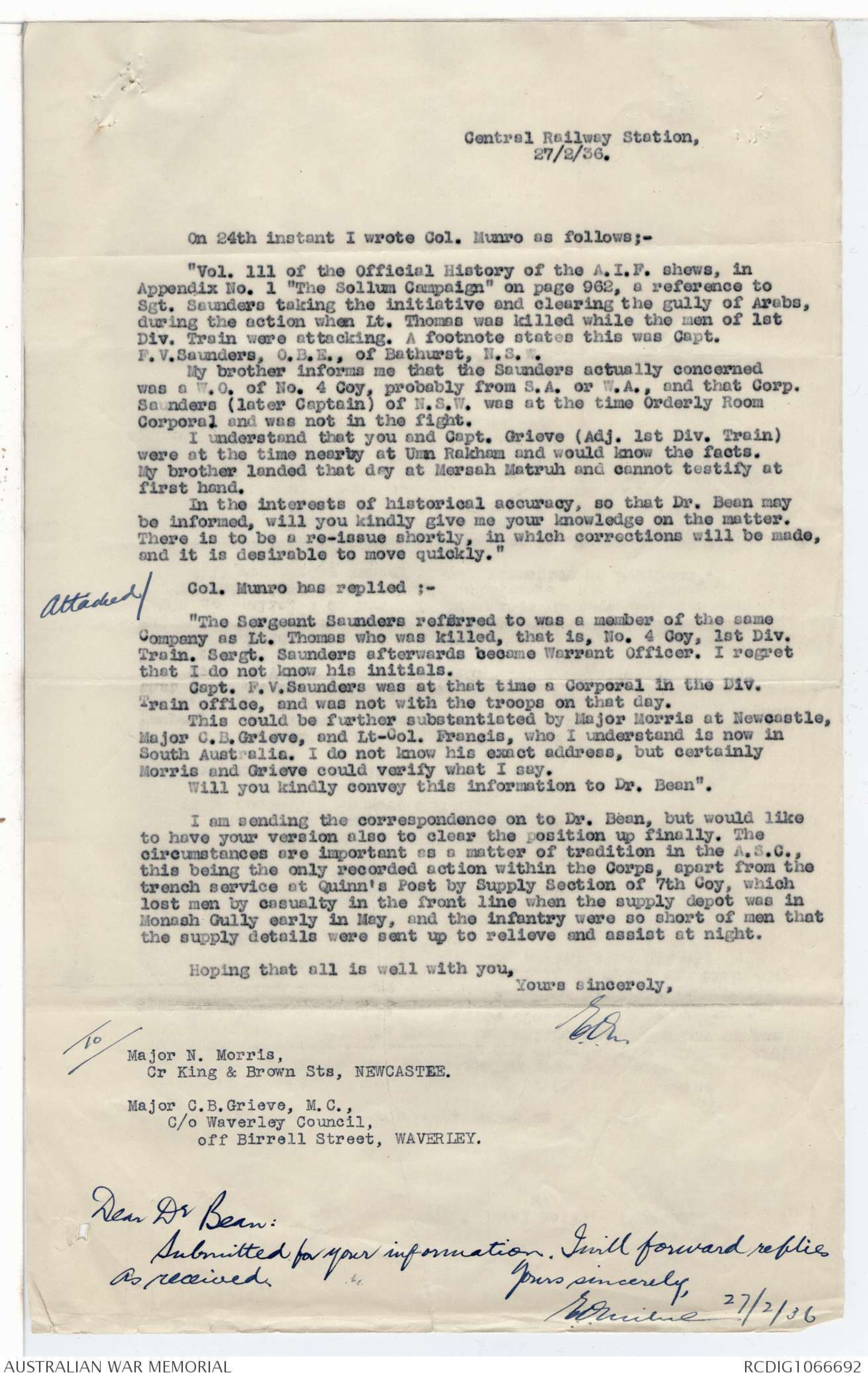
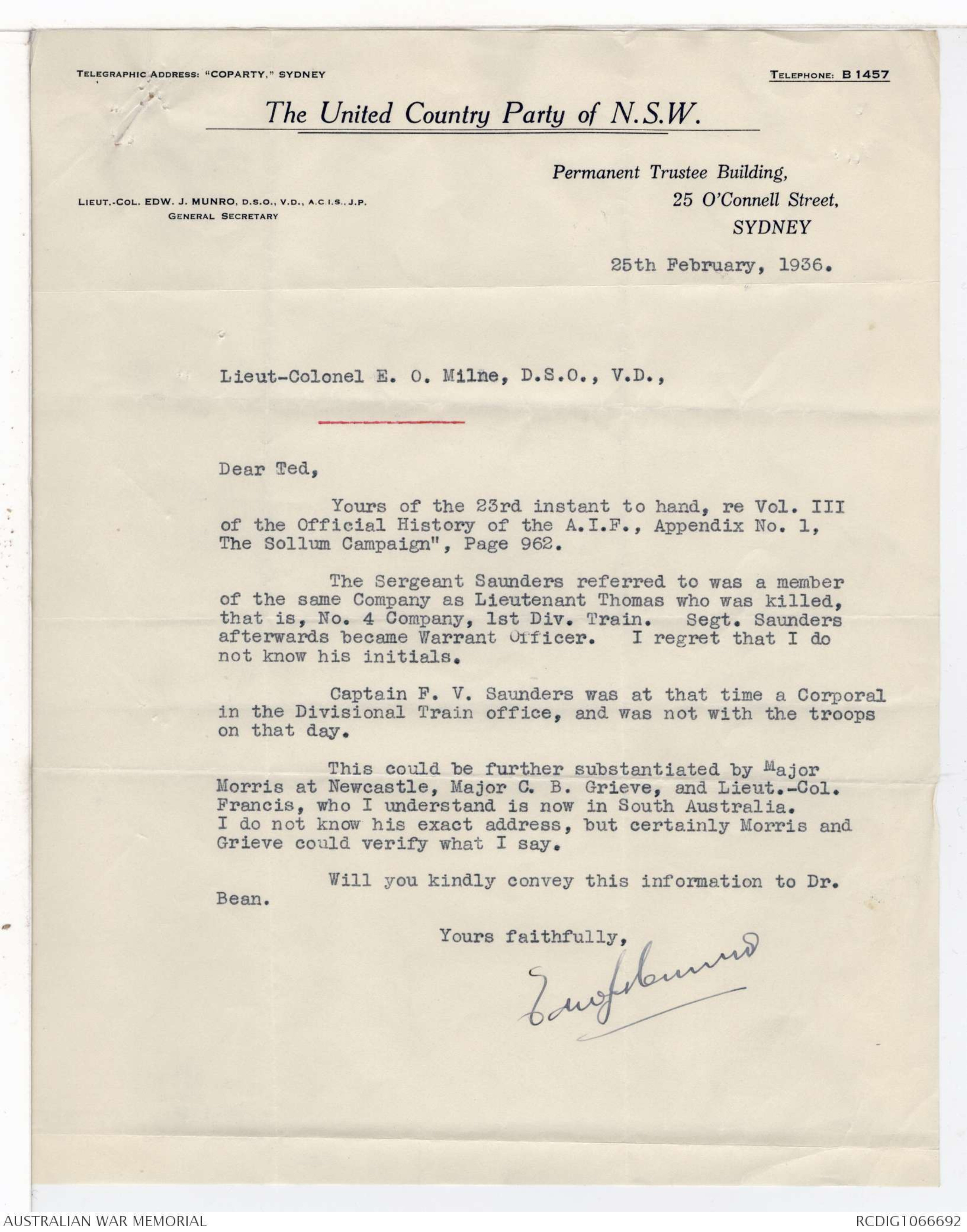
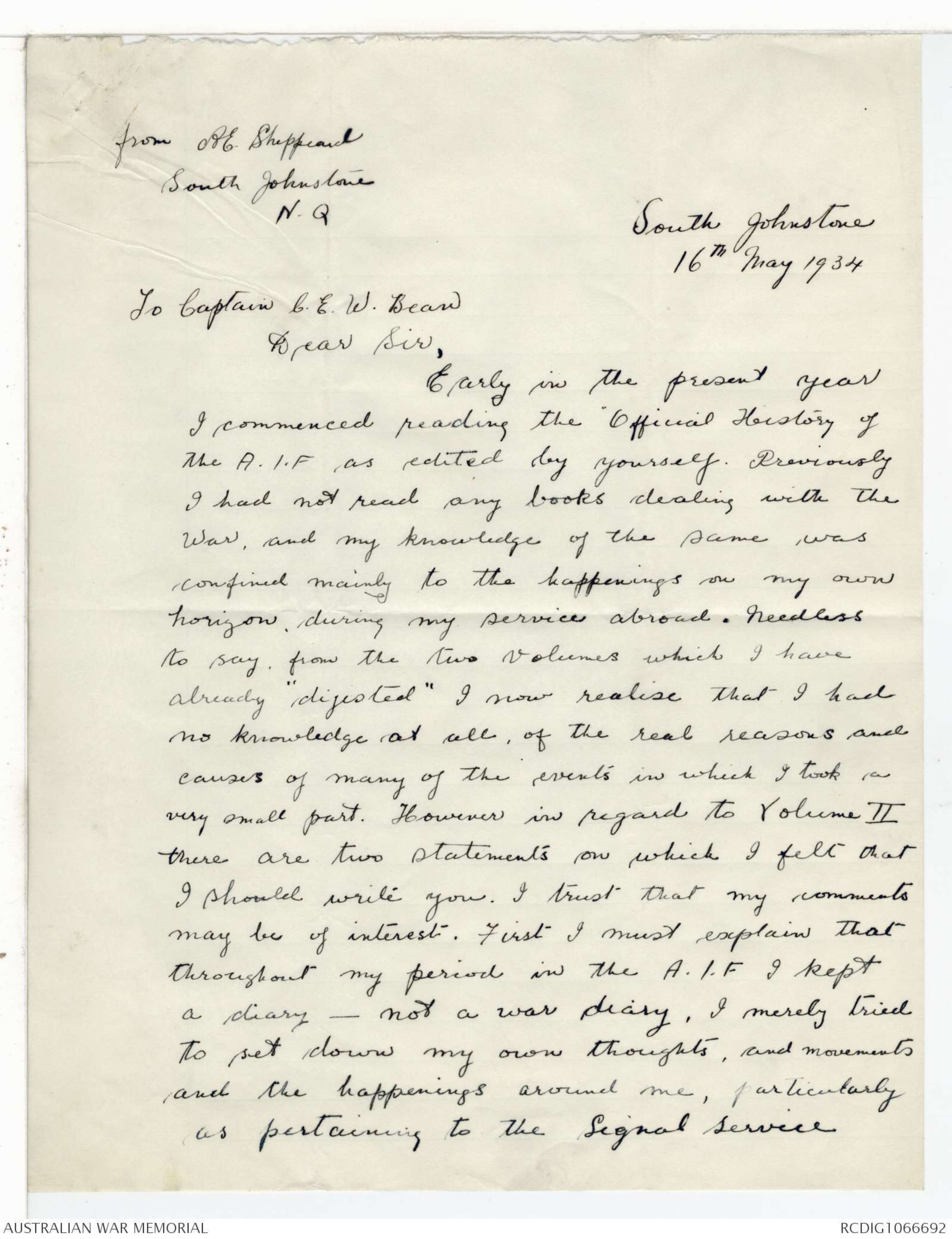
MED. HISTORY. CHAP. IX. SIX
Sea-sickness added to the misery of many.11 But before
morning all casualties from the shore had been bestowed, and
were at least in safety receiving such attention as was possible
in the face of the almost total unpreparedness.
It was candidly acknowledged. by the navy (whose ingenuousness
is refreshing) that the provision of small craft
for evacuation and other arrangements for this stage were
"totally inadequate," the essential cause being the lack of a
sufficient number of small craft.12 In respect of accommodation
the primary cause of the breakdown was the
failure by the general staff to foresee the magnitude of the
problem.
In judging this important stage of evacuation from the
point of view of the navy, the circumstances must be held
in mind. During the first twenty-four hours, in which (to
quote again the naval beachmaster), "the operation plan did
not provide for more than a very limited number of wounded
being evacuated from the Beach," the total Australian and
New Zealand wounded (almost 1,800) were transferred by
the navy from the shore to ships in the roadstead. During
this time, while taking part in the engagement also. it had
disembarked under heavy fire on a shallow beach 18,000
troops and 300 mules, besides a prodigious quantity of
munitions and stores.
Whatever may have been the defects in the arrangements
and orders, no flaw could be found in their execution.
Casualties among boats and men were heavy. "The Naval
beach section, which had to deal with the embarkation of the
wounded, had by far the most trying and hardest work of
all the (naval) sections." There is ample evidence that in
the work of the naval officers, midshipmen ("the joy and
admiration of all"), and ratings who cooperated with the
————————————————————————————
11 One tow, for example, at 10 p.m. visited six ships before being accepted
at the Seang Choon, and even then it tossed alongside for two hours. The last
tow, consisting of large Lighters (half the cases "serious"), after making a terrible
trip round the fleet and trying seven ships, was ultimately found at 3 a.m. by the
naval medical officer alongside the troopship Itonus, which had refused to take
the cases. On a peremptory order they were taken, transfer not being completed
till 5 a.m. Two fleet surgeons were placed in charge, but without orderlies,
and these could do little more than deal with the worst cases.
12 The Mediterranean had been ransacked for these. The casualties in steam
pinnaces were heavy. Herein lay, it would appear, the most formidable naval
difficulty of the undertaking.
YOUR REFERENCE
IN REPLY PLEASE QUOTE
COMMONWEALTH OF AUSTRALIA.
AUSTRALLAN WAR MEMORLAL
TELEPHONES:
B 404 & 405
"They gave their lives. For that public gift
they received a praise which never ages and a
tomb most glorious–not so much the tomb in
which they lie, but that in which their fame
survives, to be remembered for ever when
occasion comes for word or deed. . . ."
CANBERRA.
F.C.T.
19th August, 1936.
Dear Mr. Bazley,
In going through a file today I found the
enclosed papers to which we do not appear to have forwarded
a reply.
I understand that when you referred the matter to
us an enquiry was made but yielded no result. The papers
were thereupon placed on one side in the hope that some new
line of enquiry would suggest itself, and they were then,
unhappily, overlooked.
I note, however, that you have corrected the
footnote in Vol.III so that presumably you are satisfied that
you have now identified the man who figured in the incident
in question.
[*yes*] Yours sincerely,
[[?]]
Mr. A. W. Bazley,
c/- Official Historian,
Victoria Barracks,
PADDINGTON. N.S.W.
Major Treloar
For information in connection
into the file of correspondence
I sent you a week or so ago.
CEWB
18/2/36
9621.
18 March 1936.
AUSTRALIAN WAR
20 MAR. 1936
No 12/3/49
MEMORIAL
Dear Colonel Milne,
In connection with the Sollum operations, we
enlisted the aid of Base Records in order to trace the other
"Saunders". The nearest they can get to him is an Albert
Josepeh Sanders, M.S.M., whose record I give briefly hereunder.
SANDERS, Albert Joseph
M.S.M. No. 808.
Warrant Officer.
Stevedore; of Exeter, S. Aust. Born Collinsfield,
Redhill, S.Aust., 1883
Enlisted in A.I.F., 19/8/14; posted to No. 4 Company., A.A.S.C.
Promoted sergeant, 21/8/14.
Acting C.S.M., 23/11/15.
Joined Western Frontier Force, 5/12/15
Promoted C.S.M., 20/2/16; Warrant Officer, Class I 5/12/16.
Left England for home, 10/3/18.
Re-embarked for England, with 3rd General Service
Reinforcements, 23/7/18.
Left England for Australia, 4/12/18.
Discharged from A.I.F., 1/12/19.
Died, 28 January 1920.
It almost looks as if this is the man in question,
but I should be grateful if you would let me have your views
in the matter. As we are likely to be bringing out next month a new
edition of Volume III, it would be helpful if we could have
your reply before the end of March.
Yours sincerely,
A.W. Bazley.
Lieut.-Colonel E.O. Milne, D.S.O., V.D.,
Central Railway Station,
Sydney.
AUSTRALIAN WAR
-9 MAR 1936
No. . . . . . . .
MEMORIAL
Dear John.
Would you mind having a look at the
attached correspondence, and seeing if you
can help us, by reference to the Mersa
Matruh records, or the Recommendations,
to identify the Saunders whom Col
Milne refers to. I have also written
to Withers, because we cannot pick
up the man from the Nominal Roll.
(He may, of course, have gone to another
unit later on).
Yours sincerely
CEWB
6/3/36
16 Nov., 1917]
EUROPEAN WATERS
321
which suffered much from the constant zigzagging. The
Torrens, indeed, had in mid-December to be detached to
Malta, for a more thorough overhauling, as her turbines had
stripped and her steering gear was in parts almost worn out.67
Besides blocking, the southward passage of enemy submarines,
the Flotilla was also partly responsible for ensuring the
safe transit of Italian transports carrying troops to and from
Albania.68 As a rule these vessels were strongly escorted,
and enemy attacks on them were few and far between. But
on the 16th of November, 1917. the Parramatta, patrolling in
company with the Warrego, Huon, and Yarra, intercepted
at about 11 a.m. an S.O.S. call from the north, proceeded at
full speed in that direction. and at noon found the Italian
transport Orione with her stern blown completely off by an
enemy torpedo. She had about 4oo troops and a number
of wounded aboard to begin with, but a large number of
the troops were in the water a moment after the torpedo hit
her, and the Australians' first task was to rescue a mass of
swimmers. The Warrego went alongside the transport to
take of the rest of the troops and the crew: when this
was safely accomplished (and a rising sea made the task
none the easier), the Warrego made, straight for Brindisi;
the Huon— which had most of the swimmers aboard, and
received others from the Parramatta—was sent thither at
dusk, the Parramatta, Yarra, and a French destroyer which
had come up later, standing by the Orione. Lieutenant
Cyril Hill,69 Engineer-Lieutenant Bridge,70, and Signalman
Varcoe71 (all from the Parramatta) were put aboard the
transport to report whether she could be salved; on thein
assurance her master and several volunteers from her crew
went back aboard her, and the Parramatta took her in tow,
signalling by wireless for a tug. But the enemy submarine
was still on the watch, and discharged a second torpedo while
———————————————————————————————————
67 The photograph of the Australian flotilla reproduced as plate 23 of Vol. XII
was taken during the absence of the Torrens, and includes the British destroyer
Alarm.
68 The Huon and Warrego were also in January, 1918, employed in carrying the
Greek Premier Venizelos and his suite from Taranto to Athens on his return from
conference of the Allies in London.
69 Lieut.-Commr. C. J. P. Hill, R.N. Of Shrewsbury. Shropshire. Eng.; b.
Belvedere, Kent, Eng. 14 Feb., 1884.
70 Engr.-Commr. C. V. Bridge, R.A.N. Of Sydney; b. Norh Sydney, 18 Jan.,
1890.
71 Leading Signalman J. Varcoe, D.S.M. (O.N. 3059; R.A.N.) Of Sydney
and Dubbo, N.S.W.; b. Bakers Swamp, N.S.W., 20 July, 1897.
Central Railway Station,
4/3/36.
Dr. C.E.W.Bean,
Official A.I.F. Historian,
Victoria Barracks.
Dear Dr. Bean;
Further to my note of 27th March. Enclosed is
letter from Major Norman Morris, who cannot definitely confirm.
Major C.B.Grieve rang me this morning to say that he was quite
certain the subject of the incident was not F.V.Saunders, who was
his clerk in the office and would have no cause to be at the action,
and certainly would not be out in the field. Major Grieve believes
that Saunders from South Australia was concerned. He states that
after the war he was engaged at your request making praecis of certain
war diaries, including that of Col. Francis, and his recollection is
that Francis covered this incident. He has some notes on this and will
look them up. Given a little time, he will clear the matter up.
It occurs to me that possibly you have the diary now in your
office. When Major Grieve communicates again, I will report to you.
Yours sincerely,
E O. Milne
[*?
A.W.M.*]
16-8 NEWCOMEN STREET
NEWCASTLE
2nd. March 1936.
Dear Ted,
Re the Sollum Show.
I am sorry I can not give you anything
definite regarding Saunders. Joe Keleher
and myself did, not arrive at Mersa Matruh
until this particular stunt was over. We
came direct from Gallopoli and had 6 or 7
days in Alexandria and then left either on
the 3rd or 4th of January for Matruh.
I personally think that Col. Munro
is correct.
I knew F.V. Saunders and he was the
orderly room corporal for No. 1 Co. I
remember there was a Sgt. Saunders in No. 4
Co, but being from N.S.W. I did not come
into close contact with these lads until
later on. What I remember of the No. 4
Coy. Saunders was a good horseman and the
class of man who would do well in a scrap.
Sorry I can not be of more use to you.
Do not think I have forgotten your
other request re Griffiths. He is somewhere
in the district and I have left word with
the Sec. of the RETD. S. & S. I. League
for him to call and see me.
With kind regards.
Yours sincerely,
N. Morris
Central Railway Station,
27/2/36.
On 24th instant I wrote Col. Munro as follows;-
"Vol. III of the Official History of the A.I.F. shows, in
Appendix No. 1 "The Sollum Campaign" on page 962, a reference to
Sgt. Saunders taking the initiative and clearing the gully of Arabs,
during the action when Lt. Thomas was killed while the men of 1st
Div. Train were attacking. A footnote states this was Capt.
F.V.Saunders, O.B.E., of Bathurst, N.S.W.
My brother informs me that the Saunders actually concerned
was a "W.0. of No. 4 Coy, probably from S.A. or W.A., and that Corp.
Saunders (later Captain) of N.S.W. was at the time Orderly Room
Corporal and was not in the fight.
I understand that you and Capt. Grieve (Adj. 1st Div. Train)
were at the time nearby at Umn Rakham and would know the facts.
My brother landed that day at Mersah Matruh and cannot testify at
first hand.
In the interests of historical accuracy, so that Dr. Bean may
be informed, will you kindly give me your knowledge on the matter.
There is to be a re-issue shortly, in which corrections will be made,
and it is desirable to move quick
[+ Attached*]
Col. Munro has replied ;-
"The Sargeant Saunders referred to was a member of the same
Company as Lt. Thomas who was killed, that is, No. 4 Coy, lst Div.
Train. Sergt. Saunders afterwards became Warrant Officer. I regret
that I do not know his initials.
Capt. F.V.Saundors was at that time a Corporal in the Div.
Train office, and was not with the troops on that day.
This could be further substantiated by Major Morris at Newcastle,
Major C.B.Grieve, and Lt-Col. Francis, who I understand is now in
South Australia. I do not know his exact address, but certainly
Morris and Grieve could verify what I say.
Will you kindly convey this information to Dr. Bean"
I am sending the correspondence on to Dr. Bean, but would like
to have your version also to clear the position up finally. The
circumstances are important as a matter of tradition in the A.S.C.,
this being the only recorded action within the Corps, apart from the
trench service at Quinn's Post by Supply Section of 7th Coy, which
lost men by casualty in the front line when the supply depot was in
Monash Gully early in May, and the infantry were so short of men that
the supply details were sent up to relieve and assist at night.
Hoping that all is well with you
Yours sincerely,
E.O.M.
[*To*]
Major N. Morris,
Cr King & Brown Sts, NEWCASTEE.
Major C.B.Grieve, M.C.,
C/o Waverley Council,
off Birrell Street, WAVERLEY.
Dear Dr Bean:
Submitted for your information. I will forward replies
as received. Yours sincerely,
?????? 27/2/36
TELEGRAPHIC ADDRESS: "COPARTY." SYDNEY
TELEPHONE: B1457
The United Country Party of N.S.W.
Permanent Trustee Building,
25 O'Connell Street,
SYDNEY
LIEUT.-COL. EDW. J. MUNRO, D.S.O., V.D., A.C.I.S., J.P.
GENERAL SECRETARV
25th February, 1936.
Lieut-Colonel E. O. Milne, D.S.O., V.D.,
————
Dear Ted,
Yours of the 23rd instant to hand, re Vol. III
of the Official History of the A.I.F., Appendix No. 1,
The Sollum Campaign", Page 962.
The Sergeant Saunders referred to was a member
of the same Company as Lieutenant Thomas who was killed,
that is, No. 4 Company, 1st Div. Train. Segt. Saunders
afterwards became Warrant Officer. I regret that I do
not know his initials.
Captain F. V. Saunders was at that time a Corporal
in the Divisional Train office, and was not with the troops
on that day.
This could be further substantiated by Major
Morris at Newcastle, Major C. B. Grieve, and Lieut.-Col.
Francis, who I understand is now in South Australia.
I do not know his exact address, but certainly Morris and
Grieve could verify what I say.
Will you kindly convey this information to Dr.
Bean.
Yours faithfully,
EdwJMunro
from AE. Sheppard
South Johnstone
N.Q
South Johnstone
16th May 1834
To Captain C.E. W. Bean
Dear Sir,
Early in the present year
I commenced reaching Ihe "Official History of
the A.I.F ,as edited by yourself. Previously
I had not read any books dealing with the
War, and my knowledge of the same ,was
confined mainly to the happenings on my own
horizon , during my service abroad. Needless
to say, from the two Volumes which I have
already "digested" I now realise that I had
no knowledge at all, of the real reasons and
causes of many of the events in which I took a
very small part. However in regards to Volume II
there are two statements on which I felt that
I should write you. I trust that my comments
may be of interest. First I must explain that
throughout my period in the A.I.F I kept
a diary — not a war diary, I merely tried
to set down my own thoughts, and movements
and the happenings around me, particularly
as pertaining to the Signal Service
 Sam scott
Sam scottThis transcription item is now locked to you for editing. To release the lock either Save your changes or Cancel.
This lock will be automatically released after 60 minutes of inactivity.